NARGIS made a remarkable impact with winning performances in classic films.
Her fearless approach introduced girl power into Indian cinema. The superstar actress helped take Bollywood global and was one half of an iconic lead pair with Raj Kapoor.
After retiring from acting, the wife of legendary actor Sunil Dutt and the mother of popular star Sanjay Dutt made a name for herself as a big hearted humanitarian.
Born Fatima Rashid on June 1, 1929, she passed away on May 3, 1981, aged 51. Eastern Eye decided to mark her death anniversary this week, with an in depth A to Z of an all-time great.
A is for Aag: Nargis teamed up with filmmaker and actor Raj Kapoor for the first time in Aag (1948).
Although the musical drama wasn’t successful, it would kick-start the greatest onscreen pairing in Indian cinema history. They would go onto act in hit films like Andaz (1949), Barsaat (1949), Awaara (1951), Shree 420 (1955) and Chori Chori (1956).

B is for Barsaat: Although Andaz (1949) had turned them into huge stars earlier in the year, it was Barsaat (1949) that really lit the touch paper.
Their explosive chemistry onscreen included a path-breaking passionate embrace, which was so iconic that it would become part of the RK Films logo. They started off a passionate real affair that lasted throughout their journey together. She ended it because he was unwilling to divorce his wife.
C is for Cancer: The actress was diagnosed with pancreatic cancer in 1980, while serving as a politician. She underwent extensive treatment in New York. Her health deteriorated after returning to India. She went into a coma on May 2, 1981, and passed away the next day aged 51.
Her son Sanjay Dutt’s debut film Rocky premiered five days later on May 7, where one seat was kept vacant for the late actress. A year later, her husband, Sunil Dutt, established the Nargis Dutt Memorial Cancer Foundation in her memory.
D is for Debut: Being a successful child star (see Y) and the daughter of a movie icon (see J) meant that a lot of people wanted to launch Nargis as a leading lady. She opted to make her lead debut in the hit comedy Taqdeer (1943). She would later team up with that film’s director Mehboob Khan for all-time recording breaking classics Andaz (1949) and Mother India (1957).
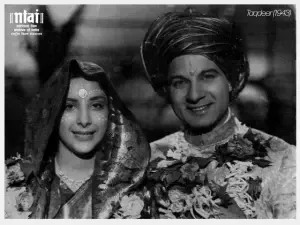
E is for Entertainment troupe: After her retirement from acting, Nargis devoted a lot of time to humanitarian work (see H). With her husband Sunil Dutt (see S), she formed the Ajanta Arts Cultural Troupe, which brought together leading actors and singers to perform for Indian soldiers serving on the frontiers. It was the first troupe to perform in Dhaka after the liberation war of Bangladesh in 1971.
F is for Fondness: In her personal life, Nargis loved to wear simple white saris, with little to no jewellery. She also enjoyed long telephone conversations with friends, and loved Indian street food from local vendors, even after reaching superstar status. The actress was very sporty and liked swimming.
G is for Government honour: Nargis was the first film actress to be given a Padma Shri, the fourth highest civilian award, by the government of India in 1958.
H is for Humanitarian: The big-hearted star had an unfulfilled dream of pursuing medicine, but made up for that with humanitarian work after her retirement from acting. She backed numerous social causes, including becoming the first patron of the Spastics Society of India.
I is for International: The actress helped take Hindi cinema international with her hit films, which drew in audiences from around the world during the 1950s, in a big way. She was particularly popular in the erstwhile Soviet Union and was sent there by the Indian government in November 1956.
Her film Pardesi (1957) was jointly made in Hindi and Russian. She won a best actress award at the Karlovy Vary International Film Festival in Czech Republic for Mother India (1957). She was massively popular in Greece and actually made her final appearance with a cameo in Greek film Tosa Oneira Stous Dromous (1968).
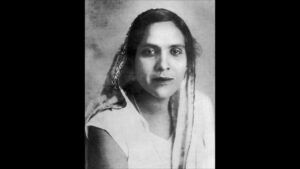
J is for Jaddanbai: The greatest influence on Nargis was her legendary mother Jaddanbai.
She was a pioneering singer, dancer, actress, filmmaker, musician and one of Bollywood’s first female composers.
She broke ground for women in commercial Indian cinema and greatly inspired those who followed in her footsteps, including Nargis.
K is for Kala Bazar: In iconic crime drama Kala Bazar (1960), the lead protagonist sells black market tickets for the star-studded premiere of Mother India (1957), which has cameos from famous celebrities including the film’s lead star Nargis.
L is for Legacy: The actress has been defined by the remarkable body of work she left behind, and all those leading ladies that were inspired by her in subsequent decades. There have been multiple books written about her.
A street in Mumbai is named after her, a postage stamp with her face was issued in India and Google celebrated the actress with a doodle.
India’s National Film Award, the Nargis Dutt award for best feature film on national integration , is named after her. She is regularly named in the top 10 greatest Bollywood stars of all time.
M is for Mother India: Nargis rounded off a remarkable frontline career with a rip-roaring performance in India’s first Oscar nominated film Mother India (1957). Her portrayal of a single mother battling against the odds to bring up her young children is widely regarded as the greatest ever performance by an Indian actress, and the best female character ever written in commercial Hindi cinema.
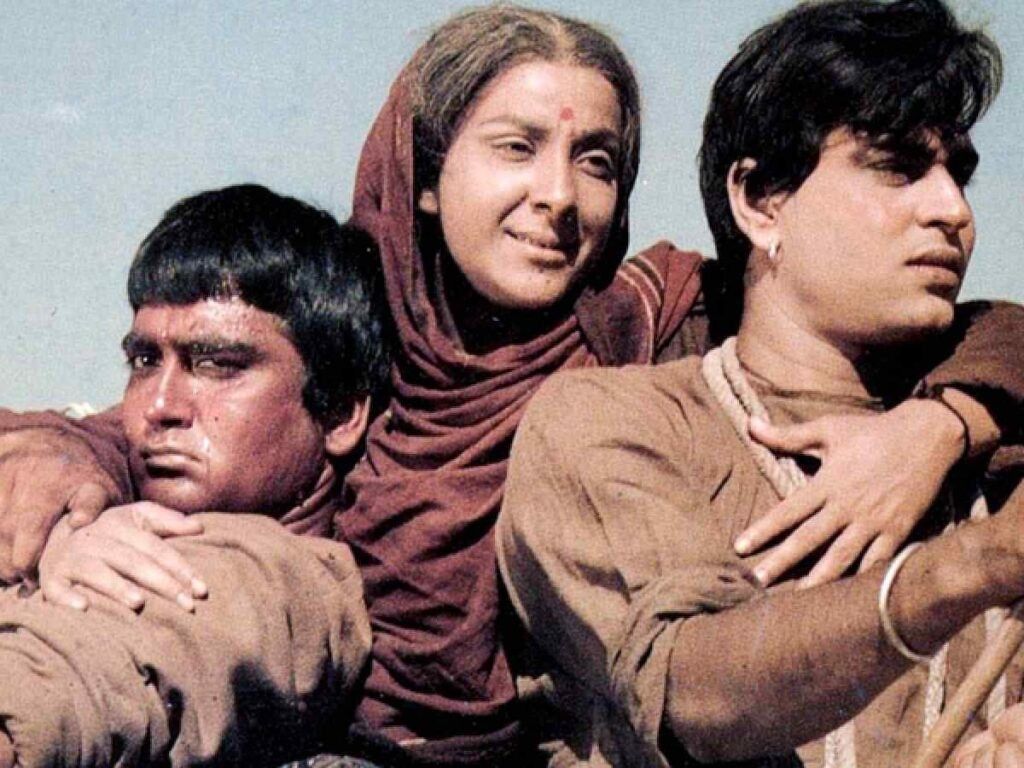
She won a Filmfare best actress award for a movie that would become the highest grossing of all time, then. It remains one of the most loved Bollywood films almost 70 years after it was released.
N is for No: Being heavily in demand meant Nargis turned down a lot of high profile films during her career. Blockbuster movies she was first choice for included Aan (1952), Baiju Bawra (1952) and Pyaasa (1957). Meena Kumari would win the first-ever Filmfare best actress award for Baiju Bawra in 1954 for the same role.
O is for Open letter: Nargis being well respected by everyone in Bollywood was illustrated in the role she played in helping get iconic film Pakeezah (1972) completed. The big budget musical had been stalled after the separation of its director Kamal Amrohi and lead star Meena Kumari. In 1968, Amrohi showed completed reels of the film to Bollywood couple, Nargis and Sunil Dutt. In early 1969, Meena Kumari wrote a famous open letter agreeing to complete the dream project for one gold coin after being persuaded by Nargis to complete it.
P is for Politics: The actress turned humanitarian was nominated to the upper house of the Indian parliament from 1980 to 1981, but illness and a premature death cut short her political career.
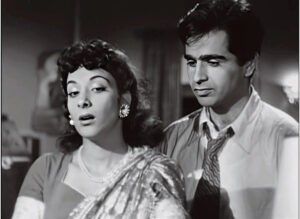
Q is for Queen: Nargis was the number one star during an era with the highest standard of leading ladies that included all-time greats like Waheeda Rehman, Meena Kumari, Madhubala, Geeta Bali, Nutan, Suraiya and Nalini Jaywant. She was the highest paid heroine of that era and the first choice for most big films.
She also regularly received top billing ahead of her famous male co-stars.
R is for Raat Aur Din: Although some of her films were released later, the actress had retired from acting after delivering her career-defining role in Mother India (1957).
But she was persuaded to do one more film to help her producer brother Jaffer Hussain, who was facing financial difficulty and commenced work on Raat Aur Din in 1961. The psychological drama was finally released in 1967. She earned a National Award (from the Indian government) for best actress for her final film.
S is for Sanju: Manisha Koirala played the actress in hit Bollywood film Sanju (2018), which was a biopic of Sanjay Dutt. British actress Feryna Wazheir had portrayed Nargis in the film Manto (2018).
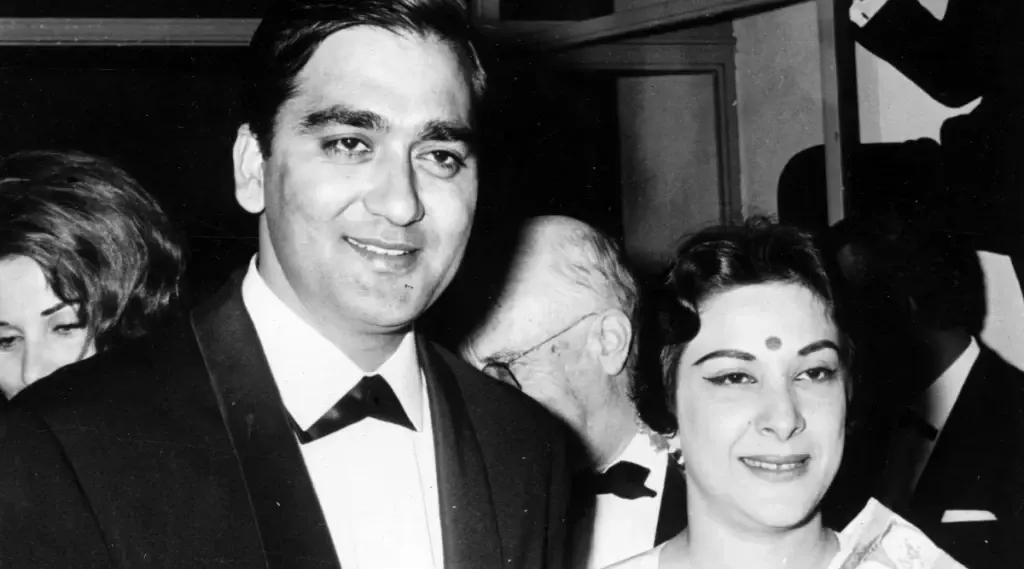
T is for Triangle: The daddy of all love triangles in Bollywood was Andaz (1949), which would become the highest grossing Indian movie of all time upon release. She starred opposite Dilip Kumar and Raj Kapoor in the first blockbuster hit of her career, and was the highest paid cast member. The movie would inspire love triangles that followed.
U is for Unfinished: The original first choice to play the lead role in Bollywood’s greatest movie Mughale-Azam (1960) was Nargis. She had commenced work on the K Asif-directed classic in the 1940s, but a series of problems, including the leading man dying and financiers leaving India for Pakistan during Partition, meant the initial effort remained unfinished. Posters for that film can still be found online.
V is for Versatile: She might have been the one of Bollywood’s most famous film stars, but Nargis was also a great actress and able to take on any role. Whether it was comedy, emotion, or hard-hitting drama, she was able to effortlessly take on any acting challenge and influenced leading ladies who followed, with her performance style.
W is for Wedding: After ending her long term relationship with Raj Kapoor, Nargis fell in love with actor Sunil Dutt while working on the film Mother India (1957). The newcomer actor had saved the superstar’s life during production.
They initially kept their relationship a secret because she was playing his mother in the movie.
They eventually married on March 11, 1958 and she converted to Hinduism, adopting the name Nirmala Dutt. They had three children together, including actor Sanjay Dutt. Nargis was called Mrs Dutt by her husband in public and she always called him Dutt Sahib.
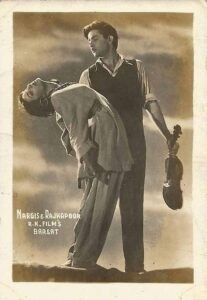
X is for X Factor: Nargis was one of those leading ladies who introduced girl power into Indian cinema. A unique combination of beauty, brains and bravery, she helped break the shackles for the leading ladies, but also empowered Indian women.
Y is for Youngster: The naturally gifted youngster had started off her acting journey as six-year-old in Talashe Haq (1935).
She was credited as Baby Nargis in the film headlined by her mother Jaddanbai, which started off her successful journey as a child star.
Z is for Zodiac: Nargis was born Fatima Rashid on June 1, 1929, in Calcutta (now Kolkata) and was a Gemini. The main traits of the star sign include being energetic, clever, imaginative, witty, adaptable, curious and intelligent.

